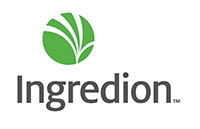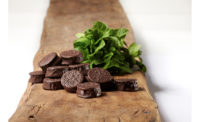Unlike many food claims, “clean label” is a somewhat cryptic term that suffers from no real regulatory definition. Indeed, each food manufacturer adheres to its own unique clean-label policy because consumers have different concerns propelling them to find what they define as a clean label on the shelf.
Because of this lack of regulation, clean label has a definition that is ever-evolving to meet consumer demands as they change in real time. Take allergens, for instance. Once relegated to specialty shops, gluten-free products are now mainstream and, as such, many shoppers now consider allergen-free as one indicator of a clean label.
“The list of allergens continues to get longer, and consumers are taking a more cautious look at labels to check out ingredients in their food,” says Mel Festejo, chief operating officer, American Key Food Products, Closter, NJ.
Similarly, the presence of genetically modified organisms (GMOs) in a formulation may compromise, for some shoppers, its status as clean label. So in a market where clean label represents many different attributes, often the best thing a manufacturer can do is make its label as transparent as possible.
There are some common identifiers recognized by the general public to indicate a clean label. According to Jenette Lee, regulatory and documentation coordinator of gum technology, Penford Food Ingredients, Centennial, CO, some hallmarks include the use of fewer ingredients that are minimally processed, possibly organic and recognizable.
“As consumers pay greater attention to ingredients lists,” says Festejo, “food manufacturers are turning to labels and ingredients as a new area for differentiation—shorter ingredients lists and simple ingredients.”

What makes a clean label?
Because of the evolving nature of the definition of clean label, many formulators and ingredient suppliers help manufacturers create custom solutions that adhere to individual standards. “As a flavor company, we respond to our customers’ understandings of ‘clean label’ as we help them develop food and beverage products for consumers,” says Kathleen Crossman, vice president, regulatory, FONA International Inc., Geneva, IL. “Part of the development process is asking customers what the term means to them as an organization and for their particular brand.” She explains that because demands can range from short and simple ingredients lists to organic and allergen-free, meeting a clean-label standard can prove challenging.
Still, snack and bakery ingredient suppliers are finding different ways to fit into the clean-label trend. The first way is by enabling manufacturers to offer an easy-to-understand label with “pantry” ingredients that shoppers will recognize.
“Honey is the perfect ingredient for bakers and snack food manufacturers that want a sweet, clean label,” says Catherine Barry, director of marketing, National Honey Board, Firestone, CO. Honey can enhance the flavors of other ingredients in a formulation, maintain moisture on the shelf and minimize cracking, and inhibit mold growth to extend shelf life, she says.
But the biggest benefit, from a marketing standpoint, is the ability to use the word “honey” on a label, Barry notes. “Honey is not created from chemicals in a processing plant. Instead, it comes from Mother Nature and is produced in a beehive,” she says, which will appeal to shoppers who demand a recognizable and natural ingredient list. “It is one of the most-familiar ingredients on the market.”
According to Angelina De Castro, senior marketing manager, Wholesome, Ingredion Inc., Westchester, IL, the company considers additive-free, easy-to-recognize and minimally processed ingredients to be clean-label-friendly. To meet this standard, it offers formulators a portfolio of functional native starches, functional flours, and specialty sweeteners and emulsifiers with all the functionality of traditional ingredients.
De Castro notes that “functional native starches deliver the same texture, process and shelf stability as traditional modified starches, with the advantage of a clean label. Since these starches are physically modified, they maintain a simple label such as corn, tapioca, potato or rice starch.” Additionally, more than 20 of the products in the company’s functional native starch portfolio are Non-GMO Project Verified.
Additionally, through a partnership with Alliance Grain Traders Inc., Regina, Saskatchewan, Ingredion now offers pulse flours and pulse proteins. “Pulse ingredients include lentils, chickpeas, peas and fava beans,” De Castro says. “These ingredients offer labeling benefits such as natural, non-GMO, high protein, gluten-free, grain-free and hypoallergenic.”
Health-boosting ingredients are often a component of clean label. At BENEO Inc., Morris Plains, NJ, offerings include functional fibers, functional carbohydrates and specialty rice ingredients. These ingredients provide benefits in areas such as digestive health, weight management, fiber enrichment, low glycemic, prolonged energy and, of course, clean label.
“Consumers today take a critical look at food content and the detailed ingredients list,” says Joseph O’Neill, president and general manager, BENEO. “Both the quality and origin of ingredients is important to them.” He notes that the company offers functional ingredients and product concepts that support all kinds of healthy lifestyles. These include chicory root fibers, via sugar-beet-based, slow carbohydrates, and gluten-free rice derivatives. The one thing they have in common, he says, is that “they are all sourced from nature and can be labeled as food—not additives.”

The growth of non-GMO
In addition to general health concerns and simple ingredients, non-GMO ingredients are increasingly part of consumers’ clean-label search. According to Caroline Kinsman, communications manager at the Non-GMO Project, Bellingham, WA, there are many reasons why shoppers are seeking out non-GMO ingredients on labels. “Consumers have concerns about the health and safety of the food they are buying and feeding their families—and most developed nations do not consider GMOs to be safe,” she explains, adding that the role of GMOs in the loss of seed diversity raises a red flag for some people.
“GMOs also pose a serious threat to farmer sovereignty and to the national food security of any country where they are grown,” suggests Kinsman. “Because GMOs are novel life forms, biotechnology companies have been able to obtain patents with which to restrict their use. As a result, the companies that make GMOs now have the power to sue farmers whose fields are contaminated with GMOs, even when it is the result of inevitable drift from neighboring fields.”
Because snack foods and baked goods can often include genetically modified ingredients—such as sugar beets, corn, canola and soy—the market is under increased consumer scrutiny. And adhering to Non-GMO Project verification standards can prove challenging.
Kinsman notes that “prepared foods often use sweeteners, and many ‘sugar’ sweeteners are derived from genetically engineered sugar beets. These ingredients must be tested or replaced with a low-risk ingredient in order to meet the Verified Standard for GMO avoidance.”
According to research from the Natural Marketing Institute (NMI), Harleysville, PA, snacks sometimes get more notice due to the high number of products that contain corn, a common genetically modified crop.
And more people are starting to pay attention to GMOs. “While previous NMI research showed that many consumers did not understand GMOs, there have been significant increases in awareness, understanding and usage of non-GMO products in the past year,” says Maryellen Molyneaux, president and managing partner, NMI.
NMI research shows that nearly 70 percent of consumers are now aware of the term “genetically modified food,” and almost as many believe GMOs can impact personal health. Half this number—35 percent—indicate they are concerned about GMOs.
Various ingredient companies and manufacturers are addressing this issue head-on:
Kikkoman Sales USA Inc., San Francisco, offers non-GMO liquid and dehydrated soy sauces.
American Key Food Products exclusively distributes non-GMO ingredients, with its starches and flours imported from countries where there is either a set of prevailing regulatory laws or policies governing the use of non-GMO ingredients, or the ingredients are derived from inherently non-GMO crops.
Clif Bar & Co., Emeryville, CA, has sourced non-GMO ingredients since the late 1990s as part of its commitment to creating a sustainable food system, and the company requires ingredient suppliers to sign an affidavit affirming that their offerings are not genetically engineered.
Ingredion’s TRUETRACE Identity Preservation program, launched in 2004, maintains non-GMO purity via global, third-party-audited best practices for segregation and documentation of non-GMO maize. “Procedures for growers regarding seed, farm practices and production fields are strictly enforced and audited according to established protocols,” says De Castro, explaining that the company can trace any batch of starch back to the farmers. “Our manufacturing plant in Indianapolis is the only completely certified non-GMO maize wet milling plant in the U.S. We also have non-GMO options in starches derived from rice, tapioca, sago and potato. These crops either have no genetically modified versions or are grown in countries that prohibit genetically modified organisms.”
Many expect clean label scrutiny to continue. “Clean-label and non-GMO demands will continue to increase across the food industry, including in snacks and baked goods,” concludes Bryan Scherer, vice president of research and development, Penford Food Ingredients. “It can also be expected that there will be additional legislative proposals for mandatory GMO labeling. Whether or not these proposals pass, they continue to raise awareness of GMO foods among average consumers. For this reason, we expect to see the demand for both clean-label and non-GMO food products steadily increase.”
Sponsored By:















